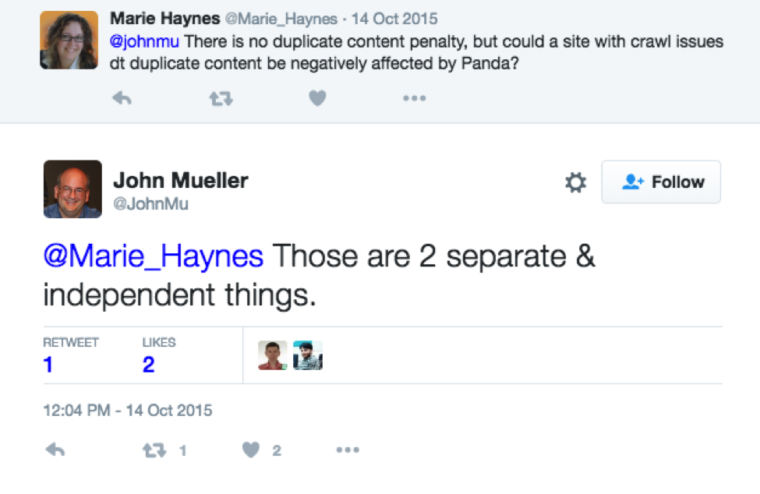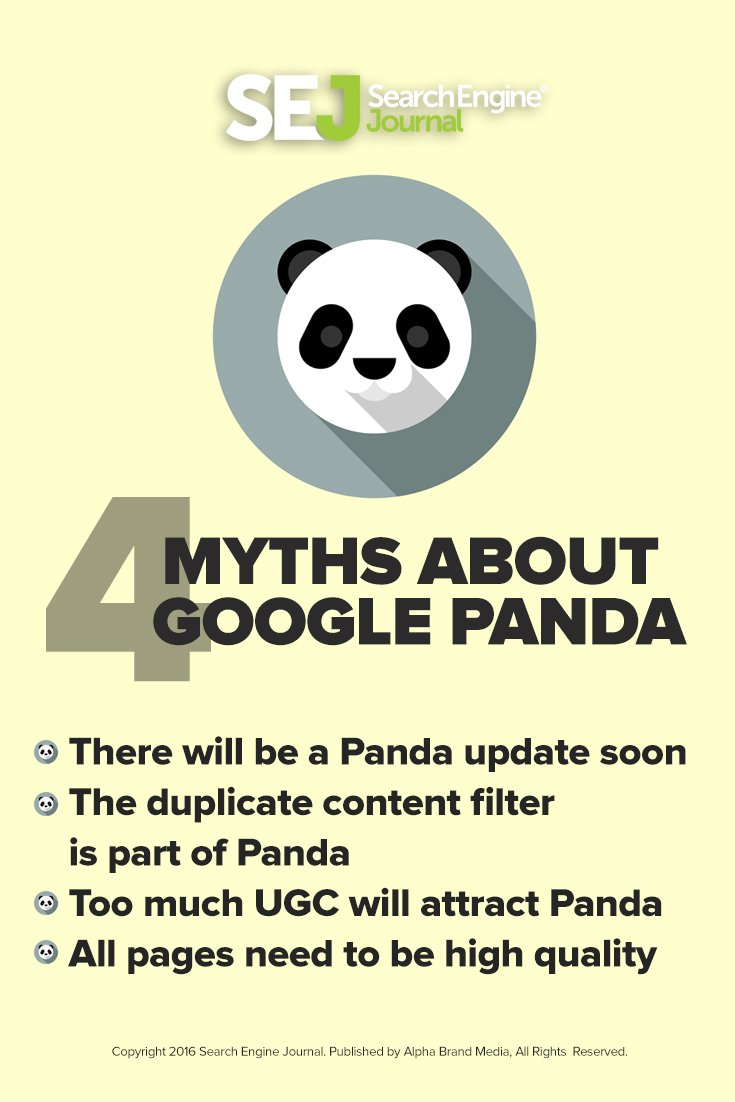Google Panda was an update introduced in 2011, aimed at preventing low-quality content from gaming its way into the top ranking slots on SERPs. How Google feels about SEO is open to question, but we can say for sure that when you could just pump out reams of garbage content stuffed with keywords and get your site above the fold on the first page, they hated it. Panda’s whole purpose was to make search rank correlate with quality.
Which is a good thing.
Trouble is, Panda blew a lot of folks out of the water. Not just spammy listicles, keyword stuffers, and link buyers, but a whole slew of people who followed the best available advice in January 2011. Come February; Panda rolled out and their rankings were badly reduced.
The workings of Google’s algorithms is always proprietary. We keep trying to guess; they keep changing the rules. As a result, there are beliefs about the way Panda actually works and even what it’s for that have clung on for years. Some of them aren’t true anymore; some of them were never true; all of them are myths that could lead you to waste your time and even potentially damage your search rank.
#1 – There Will be a Panda Update Soon
There sure will. Tomorrow, in fact – and the day after. In March of 2013, Google announced that Panda would become Panda “Everflux”, integrated with the basic search algorithm and updated constantly.
This myth comes from the impact of the initial Panda rollout, when the desired effect of Panda – spammy sites tumbled down the rankings – were accompanied by numerous undesired outcomes including many scraped sites actually rising up the rankings. In short, the result of the initial Panda rollout was chaos. People look to the likelihood of a “new” Panda update in deep concern in case all that happens again.
The worst downside of this myth is that we’re all like sportspeople taking our eyes off the ball to look at the (non-existent) UFO. There are important Google updates that are changing the way online business is conducted, and because they’re not labeled “Panda” we’re all looking the other way. Last April’s mobile-friendly update hit more sites than Panda (or Penguin, come to that) but it caused less of a stir. We’ve learned to live with Panda, and it’s helped a lot of us by making content marketing and search optimization a lot easier to align.
#2 – The Duplicate Content Filter is Part of Panda
This one is just totally untrue. It’s common, though, because they aim at similar results – rewarding quality – and they came in at the same time.
In a Twitter discussion with Marie Haynes, Google’s John Mueller said categorically that “Those are 2 separate & independent things.”

That seems pretty final.
But it doesn’t mean that you’re not going to get slapped for having a bunch of duplicate content. Google has gotten a little more sophisticated at dealing with duplicate content over the years – after all, nearly every site has some. But large amounts will open you up to loss of traffic. It’s not technically a penalty. It sure feels like one when your traffic nosedives, but when you fix it and your site gets recrawled, the traffic should recover. That doesn’t happen with Panda penalties.
There’s also a big difference between the effects of duplicate content within your site and duplicated content from elsewhere on the web: one dilutes traffic and the other sets red flags flying at Google HQ. E-commerce sites are particularly at risk here because they have thousands of product pages that might be using the manufacturer’s product descriptions or generic placeholders. Canonical tags for duplicate pages and your own copy are the cure.
#3 – Too Much UGC Will Attract Panda
User-generated content used to be the Holy Grail. It’s social proof, it’s content for free, and it’s proof of deep engagement. People don’t contribute content to websites they don’t care about.
Post Panda, that began to change. And now SEOs are recommending that clients remove all the user-generated content from their websites.
Once again, this is an overreaction based on misunderstanding what Panda’s all about. It’s not about user-generated, old, thin, whatever. It’s about quality. Some UGC is very high quality, while some is people telling you how you won’t believe how they made money online with this simple trick. Too much of that second kind can actually go against you, as Google’s John Mueller explains:
“Another thing… which is common with forums is low-quality user-generated content. If you have ways of recognizing this kind of content, and blocking it from indexing, it can make it much easier for algorithms to review the overall quality of your website.”
The alleged UGC price is even worse if your site is a forum or acts like one. In cases like Stack Overflow and Quora where almost all the content is user-generated, what is the risk that Google will hunt down spammy UGC? This very thing happened to Mozilla back in 2013.
Mueller recommends cleaning house before you get hit with a penalty:
“The same methods can be used to block forum spam from being indexed for your forum. Depending on the forum, there might be different ways of recognizing that automatically, but it’s generally worth finding automated ways to help you keep things clean & high-quality, especially when a site consists of mostly user-generated content.”
It’s worth revisiting Mueller’s point about high-quality UGC: when you collate it right UGC campaigns can be among the best forms of content in Google’s eyes, as well as being inspiring and effective for users.
Many forum sites run on a question-and-answer basis. One effective way of keeping poor content out of the bots’ claws without messing up your site’s running is to no-index pages that have questions but no answers or that have only posts from the OP of the thread. When useful content builds, those pages can be indexed.
#4 – All Pages Need to be High Quality
This is probably the biggest myth about Panda. That every single page needs to be perfect for the site to rank at all, and if there’s anything on there that Panda doesn’t like, the whole site will suffer.
In fact, Panda is sometimes applied in quite a granular fashion and generally poor-quality penalties will hit individual pages, not the whole site. The site’s main pages can still rank well even if some of that site’s content doesn’t.
What you’re looking for is the overall picture Google gets of your site. If you have an awesome site with a few bad pages, Panda might hit those pages but your site will rank well just the same. The other way around won’t work out so well. Yoast’s Joost de Valk explains:
“Panda usually affects your site because you have too many low quality pages as a proportion of your overall number of pages.”
Identifying pages that need to be fixed is a matter of checking in your analytics tool to find pages with low traffic and high bounce. Apply common sense: some pages might be really useful for the few visitors they get. Some might have what looks like a high bounce rate because visitors get what they need fast and leave.
Conclusion
Panda is a different beast when you look at it close up. Far from being capricious, Panda’s demands seem fairly reasonable when you know what they actually are and how to work with them. Don’t let myths about certain types of content, content length, or some impending Pandageddon update stop you from making your site Panda-friendly!

Image Credits
Twitter Conversation – Screenshot taken Sept 2016
Featured image via DepositPhotos





